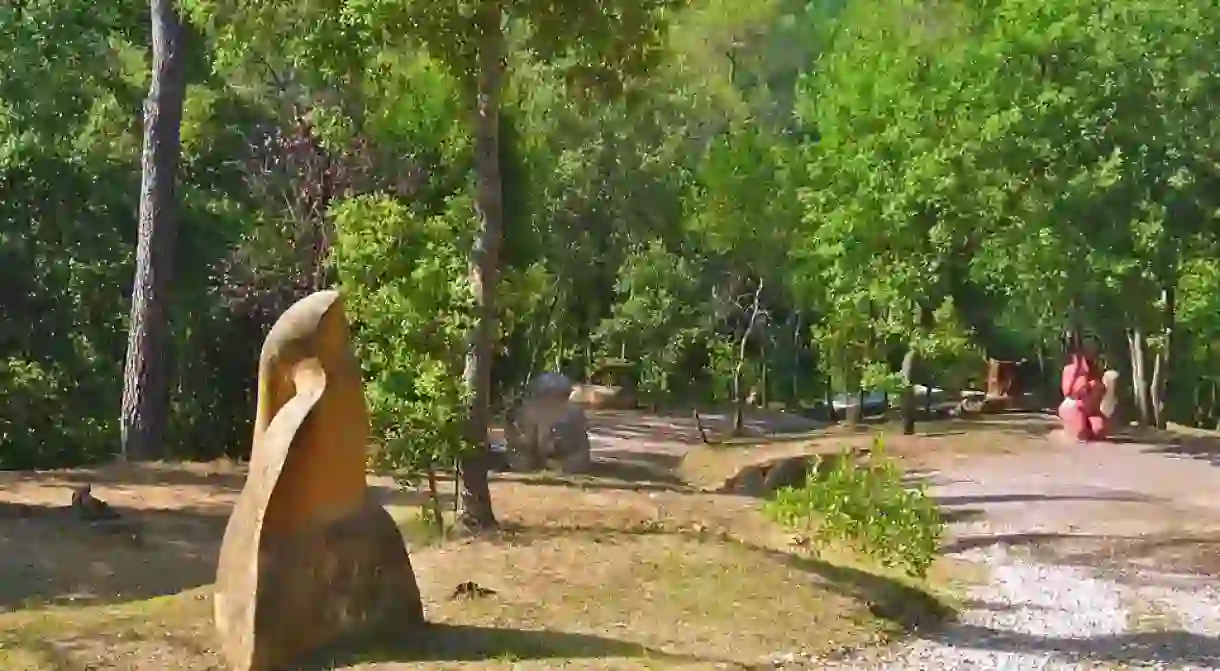The 8 Most Unusual Museums in Spain

Spain is certainly a country with a long and colourful history, as well as a culture with a well-developed sense of the surreal. Put these together and you get some particularly weird and wonderful museums dedicated to everything from toilets to erotic sculptures. Here’s eight of the more absurd and unusual exhibitions to incorporate into your next visit.
The Potty Museum or Museo del Orinal
Cathedral, Museum
This collection of over 1322 different chamber pots was started by loveable oddball Jose Maria del Arco, more fondly known as ‘Pesetos’ for his elaborate Halloween costume made out of discontinued Spanish pesetas. Since 1980 Pesetos was given, donated, or personally collected pots of all different varieties from glass to wood to metal – each of them relatable to the era and country in which they were made. Since his death in 2011, the town now manages the famous collection which you can find in the historic area of Cuidad Rodrigo next to the Santa Maria Cathedral. If you’re making your way to this lovely city, you’d be potty to miss it… http://instagram.com/p/8qw5-9x17v/?taken-at=6690144
Melon Museum or Museo del Melón
Museum
Nope, we’re not twisting your melon, man. This totally unique museum is the only one in the world (at the time of writing) to honour the juicy melon and the people who grow it. The town of Villaconejos plays a particular part in melon production. It is home to generations of melon farmers and every Autumn celebrates its very own melon festival – the time of year when historically the farmers would return to the village having spent the last six months out tending to their crop. The museum offers a historical walk through this area’s rich farming heritage as well as a chance for local inhabitants to learn and appreciate the life of their people during those harder times.
Museum of Erotic Sculpture or Museu d'Escultures Eròtiques
Museum, Park
This bizarrely brilliant erotic sculpture park is located in the woods of Can Ginebreda and is the work of Spanish sculptor Xicu Cabanyes. A great place to appreciate the human form in all its different shapes and sizes. You’ll be comforted to know that female and male appreciation is given equal balance here, and only the most stony-faced visitors will make it to the end of the trail without a giggle or ten. Be warned some of the sculpture might not be suitable for children, even to the more open-minded parents. http://instagram.com/p/BRSOtVKgQv3/?taken-by=canginebreda
Museum of Salt and Pepper Shakers or Museo de Saleros y Pimenteros
Museum
If you’re looking for kitsch you’ve found it – halfway up a mountain in Alicante. The collection of over 20,000 pairs of shakers belongs to American-born Andrea Ludden, who started her collection from one pepper mill at a garage sale. You’ll never believe the kind of things that have been replicated as shakers: row upon row of historic styles, personalities from real life and TV, old crystal sets dated as far back as 1800s to cooks, donkeys, and even kinetic shakers (whatever they are!)
The Witches Museum or Museo de las Brujas
Museum
The museum’s town, Zugarramurdi in northern Spain, was the place of one of the largest known witch trials in recorded history. Rumour had it that witchcraft was going on in the nearby caves and there was a woman from the town who was able to fly. The Spanish Government sent in the inquisition who rounded up all the accused, over 7000, including men and children. A total of 53 were found guilty and sent to prison or to their death on a stake. It was decades later that rational-headed people realised what was considered witchcraft was in fact traditional folkloric medicine. This museum, housed in the former hospital, is an ode to the people who died, and the myths and local folklore that make up the town’s history. Well worth a visit to get an understanding of a very specific time in Spanish history.
Museum of Miniatures or Museu de Miniatures i Microminiatures
Museum
While most museums or galleries won’t let you too near the exhibits, you’ll have no problems at the Museum of Miniatures as every piece is so small it has to be viewed through a microscope. Since 2007, the microscopic pieces of this museum have been donated by artists around the world, all with a talent for the smaller things in life. Whether it’s a camel caravan through the eye of a needle (impressive) to Pinchoccio getting a dressing down inside a peanut (no word of a lie), each of them makes you stop and wonder ‘how did they do that?’
The Chocolate Museum or Museu de la Xocolata
Cathedral, Monastery, Museum
The conquistadors were the first Europeans to discover chocolate when they conquered the Americas in the 15th century, and certainly didn’t waste any time bringing it back to Spain. Located in a former Sant Agustí monastery, this fantastic museum in Barcelona celebrates the history and evolution of chocolate since then. Some of the most fantastic creations in the museum are the chocolate sculptures, including a chocolate-based representation of Ben Hur, Minnie Mouse and even Barcelona’s own Sagrada Familia Cathedral. http://instagram.com/p/BVAhHrLFugp/?taken-at=204890
The Torture Museum or Museo de la Tortura
Church, Museum
While certainly not the only torture museum in the world, this one focuses on the methods of the Spanish Inquisition. This small but well presented museum highlights the vast range of ghastly devices that were conjured up in the name of punishment. From chastity belts, to iron maidens and guillotines, there are over 50 genuine instruments of torture that would have been used on hapless victims to strike the fear of god into anyone daring to cross the church.













